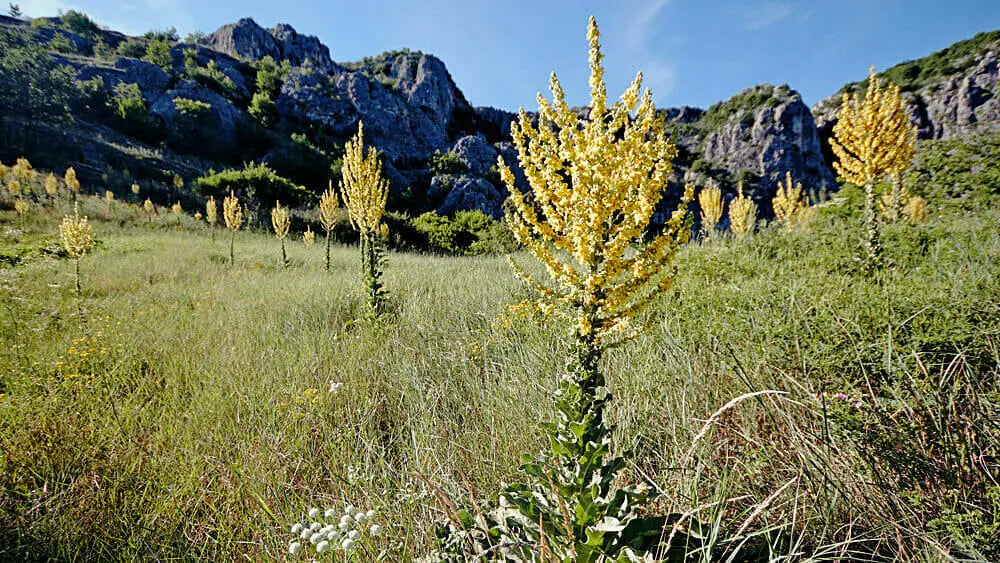Exploring the History and Folklore Surrounding Mullein Leaf

Introduction to Mullein Leaf
Mullein leaf, scientifically known as Verbascum Thapsus, is a plant species renowned for its medicinal properties. It’s a humble, fuzzy plant growing ubiquitously across the globe, often found along roadsides and in fields.
The Origins of Mullein Leaf
Digging into the historical backdrop, mullein has deep roots (pun intended) that take us back centuries.
Mullein Leaf in Ancient Civilizations
Dating back to the Ancient Greeks, mullein leaf found its first recorded medicinal use. The famed Greek botanist, Dioscorides, lauded it as a remedy for lung diseases, and it was also used as lamp wicks due to its flammability.
Mullein Leaf in Medieval Times
During medieval times, mullein earned a spot in households and apothecaries. Its leaves were often placed in shoes for warmth and comfort, and its medicinal uses expanded further.
Folklore Surrounding Mullein Leaf
But the history of mullein isn't only about its uses - it’s also steeped in folklore.
Mullein Leaf in European Folklore
In European lore, it was believed that mullein could ward off evil spirits. Its yellow flowers and towering stalk made it a beacon of light, and it was often used in spells and charms.
Mullein Leaf in Native American Folklore
Native American tribes also attributed spiritual properties to mullein. They utilized it for ritualistic purposes, considering it a symbol of protection and prosperity.
The Uses of Mullein Leaf
Beyond history and folklore, the practical applications of mullein are vast.
Traditional Uses of Mullein Leaf
Historically, people turned to mullein for a variety of ailments - from respiratory issues to wounds. Its soothing properties made it a staple in traditional herbal medicine.
Modern Uses of Mullein Leaf
Even today, we see traces of mullein in our daily lives.
Mullein Leaf in Herbal Medicine
Mullein leaf continues to be a valuable ingredient in herbal medicine, particularly for respiratory conditions. It's known for its anti-inflammatory and expectorant properties, offering natural relief for coughs and congestion.
Mullein Leaf in Skincare
You might also encounter mullein in skincare products, thanks to its antioxidant and anti-inflammatory properties. These contribute to healthy skin by reducing inflammation and combating free radicals.
The Cultivation and Harvest of Mullein Leaf
Mullein is a biennial plant that thrives in well-drained soil and ample sunlight. It's harvested in its second year when its medicinal properties are most potent.
Conclusion: The Enduring Significance of Mullein Leaf
From ancient civilizations to modern skincare products, the history of mullein leaf is fascinating. Its enduring significance lies not only in its versatile uses but also in the folklore that has woven it into the fabric of human culture.



